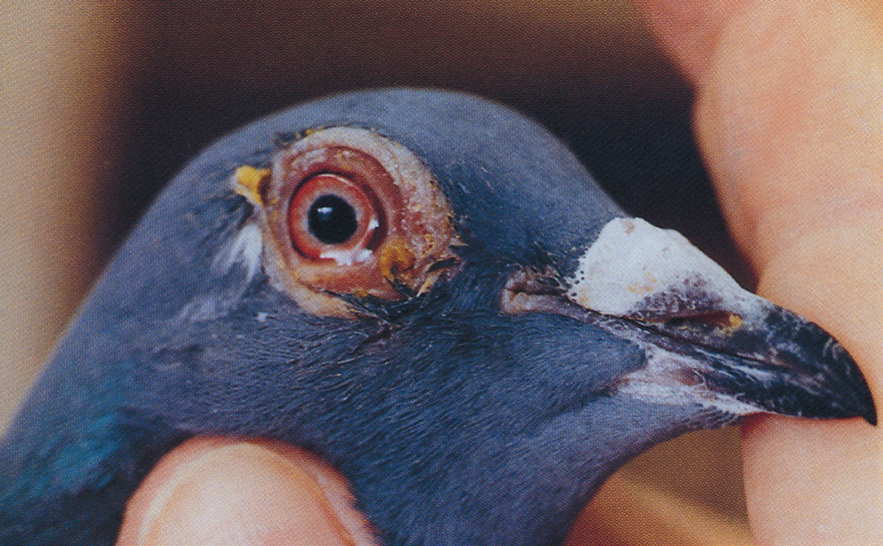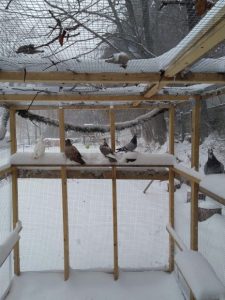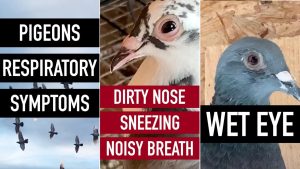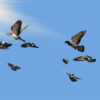
Seasonal Triggers of Respiratory Illness in Pigeons
Seasonal Triggers of Respiratory Illness in Pigeons

The seasons shift, so do the health challenges faced by racing and breeding pigeons. Cold winds, damp conditions, and sudden weather changes can stress their respiratory systems, making them vulnerable to infections. Even the strongest flyers can be brought down by sneaky seasonal triggers.
In this comprehensive guide, we’ll explore how seasonal changes affect pigeon respiratory health, identify common illnesses, and provide actionable strategies to keep your flock healthy year-round.
Why Seasonal Changes Affect Pigeons’ Respiratory Health
Pigeons possess a highly efficient yet delicate respiratory system designed for optimal oxygen intake during flight. However, environmental fluctuations—especially in temperature and humidity—can compromise this system.
Key Environmental Stressors:
-
Cold Air: Dries out respiratory passages, weakening local immunity.
-
Dampness and Humidity: Encourages fungal and bacterial growth in the loft.
-
Sudden Weather Changes: Shock the bird’s system, lowering resistance.
-
Wind and Drafts: Carry airborne pathogens directly into their lungs.
Without proper intervention, these seasonal shifts can lead to chronic illnesses that affect race performance, breeding success, and overall vitality.
Common Respiratory Illnesses Triggered by Seasonal Changes
Several serious conditions can arise when pigeons are exposed to seasonal stressors:
1. Chronic Respiratory Disease (CRD)
-
Cause: Mycoplasma bacteria, often exacerbated by cold stress.
-
Symptoms: Sneezing, nasal discharge, reduced stamina.
2. Ornithosis (Chlamydia psittaci Infection)
-
Cause: Spread more easily in damp lofts and crowded conditions.
-
Symptoms: Watery eyes, green droppings, poor appetite.
3. Aspergillosis (Fungal Infection)
-
Cause: Mold spores in damp bedding or feed.
-
Symptoms: Labored breathing, gasping, weight loss.
4. Mixed Respiratory Infections
-
Cause: Cold-induced immune suppression allows multiple pathogens to take hold.
-
Symptoms: General weakness, multiple symptoms, rapid deterioration.
Key takeaway: Seasonal changes don’t just bring colds—they invite a wide range of infections if pigeons aren’t properly protected.
Recognizing Early Respiratory Problems
Early detection is crucial to prevent minor issues from escalating into severe illnesses. Watch for these warning signs:

-
Slight changes in breathing sounds
-
Reduced activity or unwillingness to fly
-
Nasal discharge (clear, white, or yellow)
-
Slight swelling around the eyes
-
Reduced food and water intake
-
Changes in droppings (color, consistency)
-
Weight loss despite normal feeding
If you notice any of these symptoms during seasonal shifts, act promptly—early treatment can make a significant difference.
Essential Prevention Strategies
Maintaining your pigeons’ health through seasonal transitions requires proactive care. Here’s how:
1. Provide Warm, Draft-Free Shelter
-
Insulate the loft to prevent sudden temperature drops.
-
Seal gaps to avoid cold drafts, but maintain good ventilation.
-
Use absorbent bedding (like wood shavings) and change it frequently to avoid dampness.
-
Install windbreaks if the loft faces strong seasonal winds.
Tip: A slight natural airflow at the roofline helps prevent stale air without chilling the birds.
2. Enhance Nutritional Support
A robust immune system starts with proper nutrition, especially during times of stress.
-
Offer high-quality grains rich in energy and protein.
-
Supplement with vitamins A, D, and E, which are critical for respiratory health.
-
Boost antioxidants like vitamin C and selenium to combat oxidative stress.
-
Provide probiotics to support gut health, which strengthens overall immunity.
Bonus: Omega-3 fatty acids can reduce inflammation in lung tissue!
3. Use Preventative Medication Wisely
During vulnerable times (like late fall or early spring), it may be appropriate to use:
-
Respiratory support supplements (herbal or vitamin-based)
-
Prophylactic antibiotics (only under veterinary advice)
-
Antifungal treatments if damp conditions are unavoidable
Warning: Avoid overusing antibiotics without testing—misuse leads to resistance and weakens overall health.
4. Monitor Breathing and Weight Regularly
Simple weekly checks can catch problems early:
-
Listen for breathing sounds after exercise.
-
Weigh birds to track any hidden weight loss.
-
Check nares and eyes for subtle discharge.
A cheap digital scale and a few minutes of observation can save your loft from a major health crisis.
5. Schedule Seasonal Health Screenings
Consider lab testing during major seasonal transitions:
-
PCR tests for Mycoplasma and Chlamydia
-
Crop swabs to rule out Trichomonas
-
Fungal cultures if loft humidity is high
Pro Tip: Testing helps target treatment precisely—saving money, time, and your birds’ health.
Bonus Tips: Weather-Proofing Your Racing Plans
-
Monitor weather forecasts daily during training and racing season.
-
Avoid racing in extreme cold, wet, or windy conditions if possible.
-
Rotate grain mixes seasonally—higher fats for winter, higher carbs for spring races.
-
Ensure constant access to clean water (especially if using heating systems).
By aligning your management practices with the seasons, you provide your pigeons the best chance for strong finishes and healthy breeding.
Seasonal Pigeon Health Checklist
Protect Your Flock Year-Round From Respiratory Stress
Winter (Cold, Dry Weather)
☐ Seal loft drafts while maintaining roof ventilation
☐ Provide insulated or heated shelter if temperatures drop below freezing
☐ Increase energy-rich feed (e.g., sunflower seeds, safflower)
☐ Add vitamins A, D3, and E to boost lung immunity
☐ Dust loft with anti-mite powder to prevent infestations
☐ Monitor for early signs of CRD (sneezing, wheezing)
☐ Use immune-boosting supplements (e.g., oregano oil, garlic extract)
☐ Provide warm drinking water (replace frozen bowls)
Spring (Fluctuating Temps & Humidity)
☐ Deep-clean and disinfect loft before breeding season
☐ Sanitize nest boxes and perches
☐ Provide probiotics and electrolytes during temperature shifts
☐ Check birds for feather mites and respiratory discharge
☐ Test breeding stock for Mycoplasma & Chlamydia (PCR tests)
☐ Avoid overcrowding in nest areas to reduce respiratory stress
☐ Offer light respiratory support supplements during molting
Summer (Heat & Dust Exposure)
☐ Ensure plenty of shade and loft airflow
☐ Use misting systems or fans on hot days
☐ Clean loft daily to reduce ammonia and dust levels
☐ Add electrolytes to water to prevent dehydration
☐ Watch for signs of fungal infection (aspergillosis) in bedding/feed
☐ Avoid racing in high heat or heavy air
☐ Increase omega-3-rich feeds (flax, hempseed) for anti-inflammatory support
Autumn (Cold, Damp Conditions Begin)
☐ Begin seasonal respiratory health program (herbal supplements or mild antibiotics)
☐ Replace bedding more frequently to avoid dampness and mold
☐ Test droppings for early signs of disease
☐ Supplement with selenium, vitamin C, and zinc
☐ Provide garlic or apple cider vinegar in water weekly for immune support
☐ Watch for sluggish behavior and nasal discharge as temperatures drop
☐ Prepare loft for winter insulation and wind protection
Year-Round Monitoring
☐ Weekly weight checks to catch silent illness
☐ Monthly breathing sound checks after flights
☐ Routine fecal tests every 3 months
☐ Replace feed if musty, moldy, or dusty
☐ Rotate supplements to maintain effectiveness
☐ Quarantine and treat new birds before introduction
Final Thoughts: Season-Proofing Your Flock
Seasonal weather changes will always pose challenges for pigeon fanciers. However, with warm shelter, smart nutrition, early detection, and proactive care, you can protect your birds from the most common respiratory threats.
Strong lungs mean strong flights—and a much better racing season ahead.
Stay ahead of the weather, and your pigeons will stay ahead of the competition!


